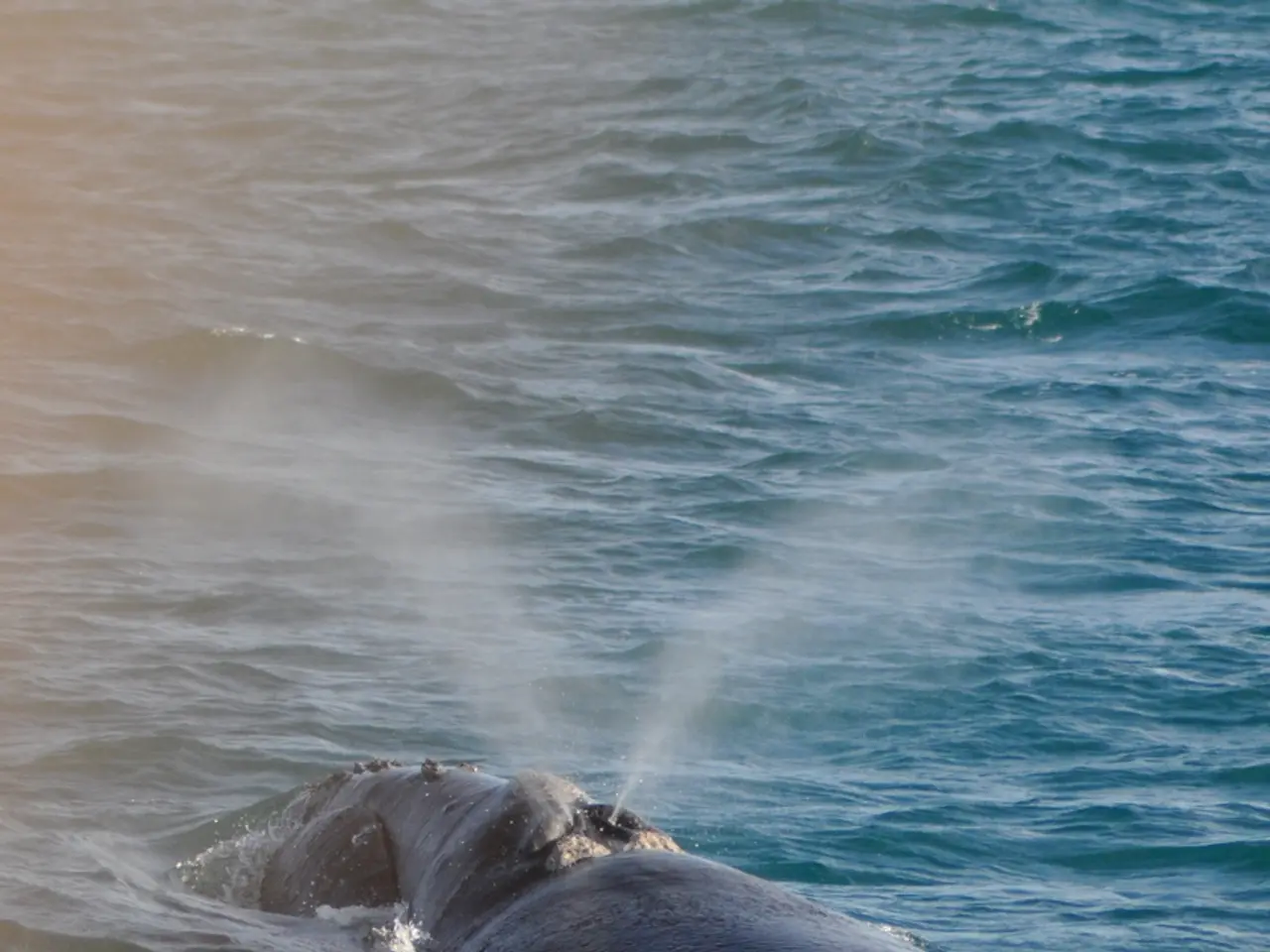Scientist's Daily Routine Involves Tracking and Identifying Sperm Whales
In the vast expanse of the Gulf of America, a groundbreaking study is underway, shedding light on the elusive lives of sperm whales. The project, known as the "Evaluating the Cumulative Impact of Multiple Stressors on Cetaceans," is part of a broader effort to understand how various environmental factors are affecting these majestic creatures.
The study, funded by the Open Ocean Trustee Implementation Group, is using digital acoustic recording tags (DTAGs) to gather detailed data on sperm whale demographics, foraging behaviour, and environmental conditions. These tags, temporary suction-cup devices, are equipped with a VHF antenna, sensors for ambient sound, movement orientation, swim speed, animal vocalizations, pressure (a proxy for depth), temperature, acceleration, and more.
The process of tagging a sperm whale is no easy feat. It requires calm seas, careful coordination, and the combined efforts of a team that includes deck crew, engineers, bridge team, scientists, galley staff, and the office team. The tagging process is a collaborative effort, with a small boat team and expert acousticians and visual observers guiding from the NOAA Ship Gordon Gunter.
Once attached, the tag emits a VHF signal each time the whale surfaces, allowing researchers to track its movements. However, the tag is programmed to release after 24 hours, and the challenge then begins to find the 6-inch orange tag floating in the ocean.
Upon retrieval, the tag is cleaned and the final step is downloading the data it has recorded. This data can provide insights into the whale's diving depths, foraging behaviour, and surfacing intervals between dives. Dr. Matthew Bowers initially analysed the data, providing a figure showing the whale's diving behaviour over the 24 hours.
In addition, samples of the whale's skin collected during the tag retrieval will be used for genetic analysis by Dr. Nikki Vollmer. This analysis could provide further insights into the whale's genetic makeup and its role within the sperm whale population.
The project aims to continue studying the lives of sperm whales as the survey continues in the Gulf of America. The findings from this study could help us better understand the impact of multiple stressors on sperm whales and aid in the development of conservation strategies to protect these fascinating creatures.
Science and environmental-science are utilizing advanced technology in the Gulf of America, as the Evaluating the Cumulative Impact of Multiple Stressors on Cetaceans study employs digital acoustic recording tags (DTAGs) to facilitate species identification and understand sperm whale behavior. Gadgets like DTAGs, equipped with sensors for various parameters, are collected and analyzed to provide insights into the whale's diving depths, foraging behavior, and environmental conditions, contributing to conservation strategies.




